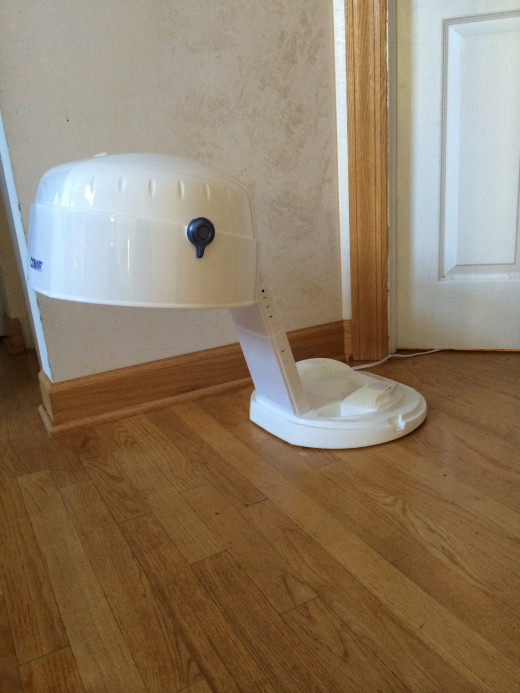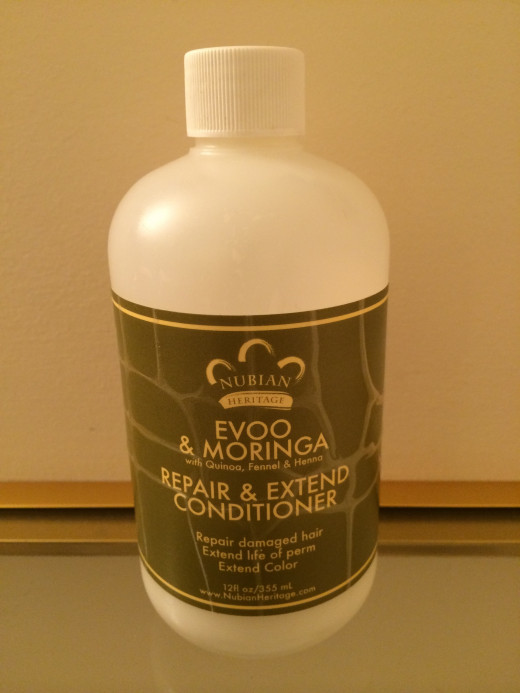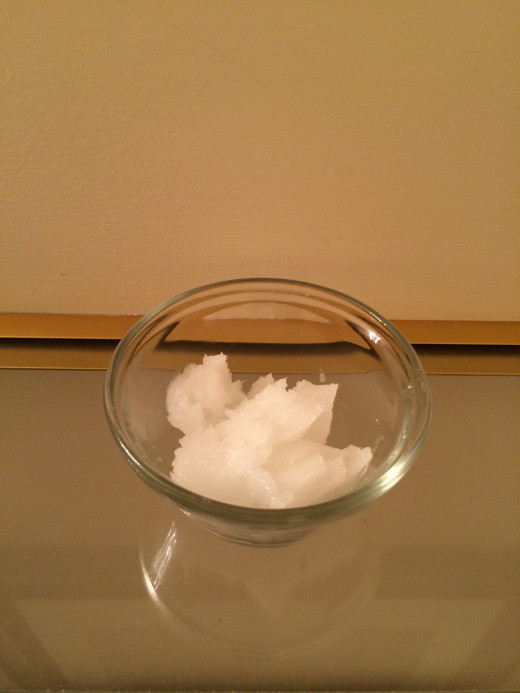Moisturize Natural Hair With Deep Conditioning Treatments
Hydrate Hair With a Hooded Dryer

Ways To Make Hair Moist
Naturalistas the world over have pondered tirelessly over that age old question, "How do I add moisture - long lasting moisture - to my parched curls?" It is absolutely true that moisture is something that black natural hair lacks and desperately needs, but that doesn't mean that the situation is hopeless for girls with ringlets. Thankfully, there are a few simple steps that can be taken to hydrate dry black natural hair and restore its moistness and suppleness.
The Heating Cap and The Hooded Dryer
To begin with, deep conditioning with a conditioning tool such as a heating cap is ideal. It is true that some benefits can be derived from simply putting conditioner on damp hair underneath a plastic cap for a period of time. I have tried that method of conditioning, and it was, well, okay, but after using a deep conditioning heating tool, I have to say that there is simply no comparison between the two methods; heat is definitely better due to the fact that it offers deeper, more intense moisturization of the hair in a short period of time. For example, heating caps do just as their name implies; they heat up when their attached cords are plugged into electrical sockets. This is extremely important because the heat opens up the cuticle of the hair, allowing moistness to completely saturate it. Many people also prefer a heating cap to other deep conditioning tools due to the fact that the cap doesn't feel as confining to the individual as do other tools that are often used to humidify dry natural hair. At any rate, heating caps are an excellent way to raise the water content of moisture-deprived curls.
Another way to moisturize natural hair through deep conditioning is to simply use a hooded hair dryer. Again, the key is to use heat to open the cuticle of the hair so that the hair is drenched in moisture. All that is necessary is the application of the chosen conditioner and a plastic cap to cover the head. Then, the person simply sits under the hooded dryer for a set period of time, for say, 20 to 30 minutes. A towel is usually recommended to protect the neck area from the heat of the dryer, but it is also useful to wipe away any excess liquid that trickles down from the hair that becomes sopping wet from the conditioning treatment!
Dampen Hair With Standing Hooded Steamers
Another great option for creating an environment for increased water absorption within hair is the standing hooded steamer. This tool actually looks very much like a hooded dryer, except for the fact that steam comes through the hood of the device. Of course, it goes without saying that the hair should be exposed to the steam so that humidification can occur. So no plastic caps with this one! Also, steamers should be used before shampooing, not after. These tools gently lift but do not entirely open the hair's cuticle. As a result, this means that steamers are great for allowing hair to be penetrated with conditioners before the hair makes contact with water. It's a unique and creative way of minimizing the loss of moisture from the hair that can sometimes occur during the cleansing process.
Standing Hooded Steamer

Moisten Hair With Handheld Hair Steamers
Handheld steamers are much smaller in size than their standing counterparts, but they also provide a means of moisturizing natural dry hair. They serve the same purpose as the standing steamers, but their smaller sizes offer greater convenience and mobility while allowing the cuticle of the hair to be gently lifted. They are great for quickly preparing hair for penetrating conditioners when time is limited.
The Search Continues
Not long ago, I tried the original Nubian Heritage EVOO & Moringa Repair and Extend Conditioner as my deep conditioner under a plastic cap and a hooded dryer. All that I can say is that the ORIGINAL formula was so very amazing!!! My hair was extremely moisturized, supple and hydrated. In fact, I didn't even need to use a hair gel to define my curls for several days after doing the deep conditioning treatment. My usual leave-in conditioner was all that I needed to seal the deal, so to speak.The ingredient list began with deionized water, olive oil, coconut oil, shea butter, sorbitol esters, mango seed butter, and so many other moisturizing oils. To top that off, though, this product was completely chemical and alcohol free! However, I ordered this conditioner from two retailers recently and received a new version of this product containing chemicals and alcohol from both online stores! This tells me that the formula has changed and that my hunt for a deep conditloner that is chemical free, alcohol free and intensely moisturizing must continue. It goes without saying that I am deeply disappointed in this new addition natural hair product Hall of Shame, compliments of Shea Moisture and Nubian Heritage.

Coconut Oil For Increased Water Absorption
I should also mention that I put coconut oil on my hair first and then slathered the conditioner on top of the coconut oil. Then came the plastic cap. I sat under the hooded dryer for 30 minutes, and I have to say that, at that point which was prior to the formula change, I had found my staple products for natural hair that is drenched in moisture. However, I remain undaunted in locating the best deep conditioner for natural hair!
Feel free to let me know what works for you, too, because that's what it's all about - girls with curls helping each other figure out this natural hair thing.
Don't forget to check out my new ebook below!
Ten Hair Commandments For Girls With Curls

Coconut Oil Always Moisturizes









